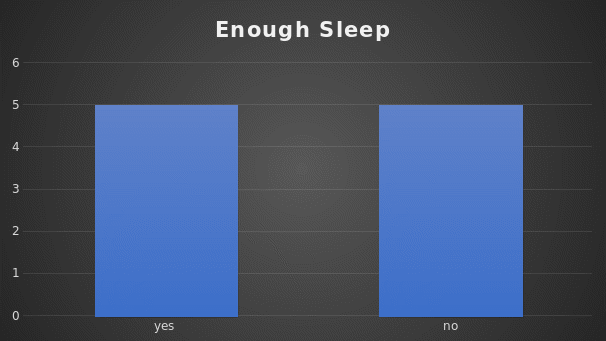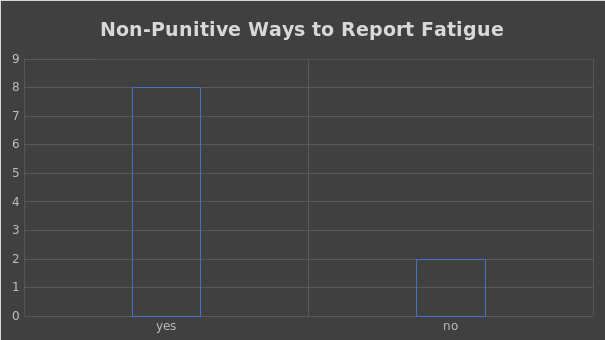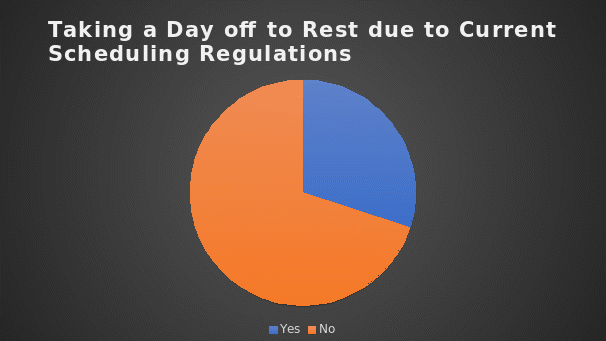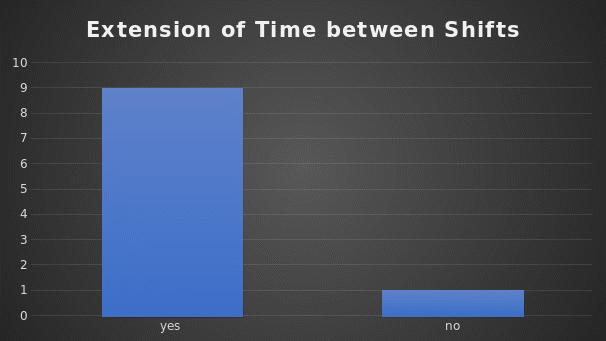Introduction
Shiftwork is essential in managing busy schedules in airports. Airport Traffic Controllers (ATCs) are involved in directing the movement of airplanes both on-air and on the ground and monitoring traffic (Samà et al., 2018). They communicate with pilots to provide them with instructions for landing and takeoff. They are supposed to take control of air traffic that is arriving at the airports and transfer control of the flights leaving their zone.
Airports use shifts to manage the control of traffic at airports and prevent workloads (Gupta et al., 2019). However, the work done by ATCs requires significant mental and emotional preparedness because of the coordination needed on different levels. Shiftwork enhances the ability of the employees at air traffic control to be well-prepared to handle the tasks (Read & Charles, 2018). This study is carried out to investigate the implications of air traffic controller shift works on aviation safety.
The purpose of the research is to study the impacts of shiftwork on overall safety in airports. Workloads often cause burnout which affects the cognitive abilities of people. Studies have shown that burnout can result in poor decision-making on the part of air traffic controllers which can lead to the development of accidents. Fatigue is considered a potential risk factor in human errors (Samra, 2018). The International Federation of Air Traffic Controllers Associations (IFATCA) has provided recommendations for airports to manage fatigue. This study will provide insight into how airport authorities can design work schedules for ATCs to avoid the development of fatigue, burnout, and exhaustion.
Case Study Background
In areas where operations run 24/7 appearance of fatigue and exhaustion is a significant challenge. The two factors have a considerable impact on the productivity, performance, and safety of the people involved. Banks et al. (2019) note that fatigue may manifest itself as poor decisions, overreacting, being distracted, falling asleep, and poor communication (Banks et al. 2019). All these issues can cause huge damage in areas where safety is paramount. Fatigue in one individual may affect the whole team as the group will have to do more work to cover for the failures of one person. In an airport environment, the presence of fatigue in one of the ATCs may create confusion which can cause irreversible damage.
Shifts are used by airport management to ensure that ATCs can handle their duties and responsibilities with the right frame of mind. The schedules ensure that employees do not work more than eight hours which is the recommended maximum duty period. Chang et al. (2019) indicate that fatigue levels vary depending on the shifts, periods for shifts, and work schedules. The air traffic controllers working in a work schedule with a significant number of air traffic are likely to experience higher fatigue levels (Chang et al., 2019). Timing of pauses and time taken on different tasks are viewed as important aspects to consider when creating shifts.
High traffic volumes are a normal occurrence in most airports. Most people consider air travel to be their preferred way of moving from one place to another due to its quickness and comfortability. In major airports, high traffic capacities can be present during the day and night. The minimum required number of ATCs in a single shift is two. Li et al. (2021) indicate that the effects of shiftwork are concerning because it impacts sleep quantity and quality. This affects the air traffic controllers’ health and safety and limits their ability to be continuously alert (McKenna & Wilkes, 2018). High-traffic occurrences may enhance the development of fatigue because of the need for ATCs to be vigilant for a specific period (Li et al., 2021).
Methodology
Participants
The main purpose of this study is to understand the implications of air traffic controller shiftwork on safety. The focus group for the research is air traffic controllers working at a busy airport. The choice for a place to administer the survey is the Los Angeles International Airport. The airport handles over 40 million passengers which means that the air traffic controllers have a busy schedule. The participants for this study understand how shifts work and can provide better insight into their implications for safety. Air traffic controllers are crucial to the safety of an airport as they handle both incoming and outgoing traffic. A simple random sampling method will be applied when administering the survey. This is because the population being targeted is large and this method will enable the selection of participants that represent the entire population. Due to a range of factors, the online survey was returned by 10 air traffic controllers.
Survey Instrument
The instrument used for this study was a questionnaire of 10 questions. Issues on fatigue management, breaks, off days, effects on sleep quality and quantity, and the scheduling regulations are discussed. The questions take into consideration the Federal Aviation Administration guidelines on shift schedules and the requirements for shiftwork. The questionnaire is developed with the view of evaluating shiftwork and the impact it has on air traffic controllers. The majority of the questions provided on the questionnaire have multiple choices. To understand the implications of shiftwork on safety, certain factors are considered. High traffic volumes, schedules are chosen, provision of breaks, and sleep quality and quantity are considered. This study is related to the issue of fatigue development in air traffic controllers.
Survey Results
The survey was administered online to air traffic controllers from Los Angeles International Airport. The survey results are presented as follows
Table 1: Gender of Participants.
Table 2: Age of Participants.

Figure 1 outlines the concept of recuperative breaks for air traffic controllers. It is important to understand whether the facility offers the employees breaks to recover during shiftwork. This is because such breaks can enhance the ability of the air traffic controller to concentrate and provide quality work. The data indicates that the majority of the respondents felt that they were provided with breaks to recover when handling high traffic shifts.

Figure 2 illustrates the views of participants on the number of hours that should be scheduled off between any two shifts for air traffic controllers to have adequate rest. It is important to note that shiftwork for ATCs is demanding and requires the use of cognitive skills to coordinate between various activities. Having enough rest between two shifts can be essential in regaining the energy needed to continue providing quality work. The majority of the respondents indicated that at least 10 hours can be enough in ensuring adequate rest is achieved.

Airport management utilizes scheduling to create shifts for their workers at air traffic control towers. Scheduling minimum is intended ate ensure that workers get enough rest while still ensuring that airports can continue functioning. The results indicate that even with the current scheduling minimums employees still feel fatigued while on duty. Fatigue is a huge impediment and can result in poor decision making which may lead to disasters.

Figure 4 illustrates the concept of quality sleep for air traffic controllers. In most cases, shiftwork limits the ability of the ATCs to get enough sleep which is normally 8 hours. The need to prepare for the next shift may limit the time that the ATCs have for sleep. The results indicate that majority of the participants were able to have enough sleep (8hrs) even with the tough schedules.

Figure 5 outlines the results of the question on whether the participants feel the facility provides non-punitive ways of reporting fatigue. The results indicate that majority of the participants feel their place of work has provided ways to report fatigue. It is common for employees to develop fear in the workplace because of the management’s ways of handling issues. Fatigue is an issue that has to be given priority to ensure the safety of aviation.

Figure 6 illustrates the answer to the question of whether participants have ever taken a day off to rest due to the current scheduling regulations. The results indicate that most of the participants are comfortable with the scheduling regulations that are in place. Taking a day off would mean that the employees are not getting enough rest. With the changes that have been made by various organizations, rest has become integral to the work of ATCs.

Figure 7 displays data from the question on whether if the participants are given the power, they could extend the time between shifts. The time between shifts is crucial because it contributes to their ability to have adequate rest. The majority of the participants would extend the time between shifts which indicates a lack of enough time.

Figure 8 displays answers to the question of whether home responsibilities limit adequate rest between shifts. Most of the participants indicated that their home responsibilities affected the time they had for adequate rest between shifts. This shows the challenge that many ATCs face during their shift work and the likelihood it impacts their health.
Discussion
Air traffic controllers operate in a highly intensive environment that requires awareness. In demanding tasks, the development of fatigue and exhaustion is a common issue (Mélan & Cascino, 2021). The provision of enough recuperative breaks is crucial in assisting ATCs during their shift work (Ferguson et al., 2019). Providing ATCs with the ability to report fatigue without any fear is essential in identifying workers who are exhausted. Airport management needs to consider the ATCs who have home responsibilities because it becomes difficult to balance work and family matters. Extending the number of hours between shifts is one of the changes that can benefit air traffic controllers. However, due to human resource needs, it might be difficult for airports to extend the hours.
Conclusion
In summary, shiftwork has a huge impact on the health of air traffic controllers. Airport management has initiated measures to ensure that the ATCs are not affected significantly by the schedules. However, even with the current measures, the air traffic controllers are still getting fatigued and exhausted. This study has several limitations such as the lack of enough time and participants. The main results of the study are that recuperative breaks can contribute to the reduction of fatigue in employees. Extending the number of hours between shifts can be beneficial to ATCs.
Future Recommendations
Future studies can focus on a large sample size using an enhanced survey instrument to improve understanding of the topic. The study provides a preliminary analysis of shiftwork for air traffic controllers. The concept of fatigue evolves every time changes in the aviation sector occur. Further research can cover how shiftwork has been affected during the Covid-19 pandemic and how it has impacted the air traffic controllers. This study provides a background on the implications of air controller shiftwork on aviation safety.
References
Banks, S., Landon, L. B., Dorrian, J., Waggoner, L. B., Centofanti, S. A., Roma, P. G., & Van Dongen, H. P. (2019). Effects of fatigue on teams and their role in 24/7 operations.Sleep Medicine Reviews, 48, 101216. Web.
Chang, Y. H., Yang, H. H., & Hsu, W. J. (2019). Effects of work shifts on fatigue levels of air traffic controllers.Journal of Air Transport Management, 76, 1-9. Web.
Ferguson, S. A., Appleton, S. L., Reynolds, A. C., Gill, T. K., Taylor, A. W., McEvoy, R. D., & Adams, R. J. (2019). Making errors at work due to sleepiness or sleep problems is not confined to non-standard work hours: results of the 2016 Sleep Health Foundation national survey.Chronobiology International, 36(6), 758-769. Web.
Gupta, C. C., Coates, A. M., Dorrian, J., & Banks, S. (2019). The factors influencing the eating behavior of shift workers: what, when, where and why.Industrial Health, 57(4), 419-453. Web.
Li, W. C., Kearney, P., Zhang, J., Hsu, Y. L., & Braithwaite, G. (2021). The analysis of occurrences associated with air traffic volume and air traffic controllers’ alertness for fatigue risk management.Risk Analysis, 41(6), 1004-1018. Web.
McKenna, H., & Wilkes, M. (2018). Optimizing sleep for night shifts.BMJ: British Medical Journal (Online), 360. Web.
Mélan, C., & Cascino, N. (2021). Effects of a modified shift work organization and traffic load on air traffic controllers’ sleep and alertness during work and non-work activities.Applied Ergonomics, 98, 103596. Web.
Read, K., & Charles, R. (2018). Understanding teamwork errors in Royal Air Force air traffic control.Safety Science, 109, 36-45. Web.
Samà, M., D’Ariano, A., Corman, F., & Pacciarelli, D. (2018). Coordination of scheduling decisions in the management of airport airspace and taxiway operations.Transportation Research Part A: Policy and Practice, 114, 398-411. Web.
Samra, R. (2018). Brief history of burnout.BMJ: British Medical Journal (Online), 363. Web.